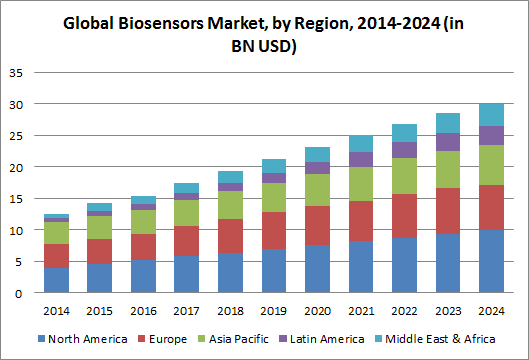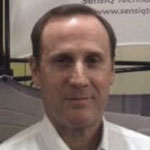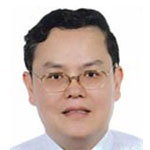Biosensors 2023
Biosensors and Bioelectronics 2023 Organizing Committee, is a great pleasure and an honor to extend you a warm invitation to attend 17th International Conference and Exhibition on Biosensors & Bioelectronics during April 12-13, 2023 in Vancouver, Canada with the theme "Future trends development and new intervention in biosensors technologies".
Biosensors and Bioelectronics 2023 conference explores new advances and recent updated technologies. It is your high eminence that you enhance your research work in this field. Biosensors conference deals with recent advances in the field of biosensors like security and sensing, photonic sensor technologies, Biosensors for imaging and many more. Biosensors congress provides a unique platform for people who conduct their research work in this field. The conference captivates individuals both from commercial and academic worlds yet establishes a firm link and binds us together with the recent updated accomplishments. We provide a good opportunity by admiring your updated research knowledge and also by publishing it in our respective Journals. The congress ultimately provides a good gathering of bright personalities to update us the new research on Biosensors.
Importance and Scope:
Biosensors and Bioelectronics 2023 provides a unique forum for the publication of innovative research on the development of alternative sustainable technologies. Biosensors which provide monitoring biological and synthetic processes can be used besides medical measuring and analyzing, for environmental observations and controls, defense industry, agriculture and food. Thus, they have an important role in daily life. In this review, characteristics of biosensors that are used in medical measuring and analyzing have been determined and classi?cations of biosensors according to different features that are found in literature are presented.
The forum of professors, Scientists, students and researchers from all corners of the globe, come together to discuss future science. Each session of the meeting is designed by experts which includes a variety of lectures like keynote forums, plenary sessions, oral presentations, Young Researcher Forums, poster presentations, Workshops and symposium. We are glad to welcome you on behalf of organizing committee to join us and interact on different issues and solutions related to Biosensing Technologies and their applications in different medical and other scientific fields.
Kuwait Journal of Science (KJS):
Indexed in Scopus, SCIE, ISI, CAS, etc
Kuwait Journal of Science and Engineering (KJSE, ISSN: 1024-8684), which has been in publication by the Academic Publication Council of Kuwait University since 1974, we are now publishing Kuwait Journal of Science (KJS) as an independent new Journal catering exclusively to a wide community of professionals in various disciplines of science.
-
Selected Paper/Manuscript will be published on Kuwait Journal of Science.
Why To Attend?
This is your best opportunity to reach the largest assemblage of participants from the Biosensors community. It provides a premier technical forum for reporting and learning about the latest research and development, as well as for launching new applications and technologies and the effectiveness of various regulatory programs towards Bioelectronics and Biosensors. Conduct presentations, distribute information, meet with current and potential scientists, and receive name recognition at this 2-day event.
Our aim is to aggregate Biosensors and Bioelectronics Scientists community and various Associations and to create a platform for robust exchange of information on technological advances, new scientific achievements and the effectiveness of various regulatory programs in the field of Biosensors. It provides a premier technical forum for reporting and learning about the latest research and development, as well as for launching new applications and technologies.
Target Audience:
-
Nobel laureates & MD/Presidents
-
Departmental Head & Chairs
-
Investors ,Innovators
-
Professors
-
Research Scholars
-
Students
-
Biosensors Service Providers
-
Manufacturing Companies
-
Research Organizations
-
Ballast Water Treatment-Related Associations, Organizations, Forums, and Alliances
-
Distributors, Resellers, and Traders
-
Government Bodies such as Regulating Authorities and Policy Makers
-
Venture Capitalists, Private Equity Firms, and Startup Companies
Details of Biosensors 2023 Conference:
Sessions/Tracks
Theme: "Future trends development and new intervention in biosensors technologies"
A biosensor is an analytical device, used for the detection of an analyte, that combines a biological component with a physicochemical detector. Electrochemical biosensors are normally based on enzymatic catalysis of a reaction that produces or consumes electrons (such enzymes are rightly called redox enzymes). The sensor substrate usually contains three electrodes; a reference electrode, a working electrode and a counter electrode. Amperometric biosensors function by the production of a current when a potential is applied between two electrodes. They generally have response times, dynamic ranges and sensitivities similar to the potentiometric biosensors. The potentiometric biosensor, (potential produced at zero current) gives a logarithmic response with a high dynamic range. Such biosensors are often made by screen printing the electrode patterns on a plastic substrate, coated with a conducting polymer and then some protein (enzyme or antibody) is attached. They have only two electrodes and are extremely sensitive and robust. A microbial biosensor is an analytical device which integrates microorganism(s) with a physical transducer to generate a measurable signal proportional to the concentration of analytes.
Graphene based enzymatic and non-enzymatic electrodes can efficiently detect glucose, cytochrome-c, NADH, hemoglobin, HRP, and cholesterol, hydrogen peroxide, AA, UA, DA, respectively. Nanocapsules are nanoscale shells made out of a nontoxic polymer. They are vesicular systems that are made up of a polymeric membrane which encapsulates an inner liquid core at the nanoscale level. Nanocapsules have a myriad of uses, which include promising medical applications for drug delivery, food enhancement, nutraceuticals, and for the self-healing of materials.
A biotransducer is the recognition-transduction component of a biosensor system. It consists of two intimately coupled parts; a bio-recognition layer and a physicochemical transducer, which acting together converts a biochemical signal to an electronic or optical signal. Electronic biosensing offers significant advantages over optical, biochemical and biophysical methods, in terms of high sensitivity and new sensing mechanisms, high spatial resolution for localized detection, facile integration with standard wafer-scale semiconductor processing and label-free, real-time detection in a nondestructive manner. Gravimetric biosensors use the basic principle of a response to a change in mass. Most gravimetric biosensors use thin piezoelectric quartz crystals, either as resonating crystals (QCM), or as bulk/surface acoustic wave (SAW) devices. Pyroelectric biosensors generate an electric current as a result of a temperature change. This differential induces a polarization in the substance, producing a dipole moment in the direction of the temperature gradient. The result is a net voltage across the material.
Aptamers are oligonucleotide or peptide molecules that bind to a specific target molecule. Aptamers are usually created by selecting them from a large random sequence pool, but natural aptamers also exist inriboswitches. Immunosensors are built by means of the appropriate combination of the biomolecules with the transducer used together, they can be applied in specific analytical situations. Immunosensors commonly rely on the reuse of the same receptor surface for many measurements. A Biochip is a combination of minute DNA spots hooked up to a hard surface. Scientists use DNA Biochips to check the expression levels of huge number of genes at the same time. Each DNA spot contains picomoles of a precised DNA sequence known as a probe. These can be tiny section of a gene or a DNA particle that are used to cross breed a cDNA or cRNA. Probe-target cross breeding is usually quantified and detected by detection of fluorophore. Silver or chemiluminescence-labeled targets to identify corresponding abundance of nucleic acid sequences in the target. Sensors are devices that respond to physical or chemical stimuli and produce detectable signals. They are a critical extension of human perception of the world in many aspects of the modern society. This is largely because we are much less sensitive to the chemical or biological environment than to the physical environment (e.g., light, pressure, temperature, or humidity). However, appropriate chemical or biological compositions are tightly linked to the quality of life.
Biological properties can be measured and altered using electronics, magnetics, photonics, sensors, circuits, and algorithms. Applications range from basic biological science through clinical medicine, and enable new discoveries, diagnoses, and treatments by creating novel devices, systems, and analyses. Biomolecular Electronics is a branch of nano-science and technology dealing with the investigation and the technological exploitation of electron transport properties in special classes of biomolecules. Albeit it deals with molecules that can donate to or receive electrons, biomolecular electronics has nothing to do with the molecular bases ruling the generation and propagation of electrical signals in neural cells, i.e. the action potential. Bioanalysis is one of the sub categories of Chemistry that helps in measuring Xenobiotics (unnatural concentration or location of drugs, Metabolites and biological molecules) in biological system. Biomedicine is a branch of medical sciences that deals with applying biological and natural science principles to clinical practices. It studies our ability to cope with the environmental changes.
Photonic Sensing focuses on experimental contributions related to novel principles, and structures or materials for photonic sensors. Optical fibers can be used as sensors to measure strain, temperature, pressure and other quantities by modifying a fiber so that the quantity to be measured modulates the intensity, phase, polarization and wavelength or transit time of light in the fiber. Sensors that vary the intensity of light are the simplest, since only a simple source and detector are required. A particularly useful feature of intrinsic optical fiber sensors is that they can, if required, provide distributed sensing over very large distances. Photonic integrated circuits (PICs) are optically active integrated semiconductor photonic devices which consist of at least two different functional blocks, (gain region and a grating based mirror in a laser...). These devices are responsible for commercial successes of optical communications and the ability to increase the available bandwidth without significant cost increases to the end user, through improved performance and cost reduction that they provide. The most widely deployed PICs are based on Indium phosphide material system. Silicon photonics is an active area of research.
Bio-sensing technologies are of increasing importance in healthcare, agri-food, environmental and security sectors, and this is reflected in the continued growth of global markets for such technologies. Biomechanics is closely related to engineering, because it often uses traditional engineering sciences to analyze biological systems. Some simple applications of Newtonian mechanics and/or materials sciences can supply correct approximations to the mechanics of many biological systems. Reliable methodologies are needed for point and stand-off detection of chemical, biological, radiological, special nuclear and explosive (CBRNE) materials. These technological needs are not universally military in nature. For example, there is pervasive interest among diverse disciplines such as medicine, law enforcement, explosive ordinance disposal, Natural environmental protection, industrial manufacturing and food processing in being able to develop capabilities for the rapid detection and identification capabilities for various biochemical markers.
The field of optical biosensors has been a growing research area over the last three decades. A wide range of books and review articles has been published by experts in the field who have highlighted the advantages of optical sensing over other transduction methods. Fluorescence is by far the method most often applied and comes in a variety of schemes. Nowadays, one of the most common approaches in the field of optical biosensors is to combine the high sensitivity of fluorescence detection in combination with the high selectivity provided by ligand-binding proteins. In this chapter we deal with reviewing our recent results on the implementation of fluorescence-based sensors for monitoring environmentally hazardous gas molecules. Medical Image Analysis provides a forum for the dissemination of new research results in the field of medical and biological image analysis, with special emphasis on efforts related to the applications of high-level computer vision, virtual reality and robotics to biomedical imaging problems.
The majority of reported biosensor research has been directed toward development of devices for clinical markets; however, driven by a need for better methods for environmental surveillance, research into this technology is also expanding to encompass environmental applications. Biosensors are biophysical devices which can detect the presence of specific substances e.g. sugars, proteins, hormones, pollutants and a variety of toxins in the environment. They are also capable of measuring the quantities of these specific substances in the environment.
Biomedical engineering (BME) is the application of engineering principles and design concepts to medicine and biology for healthcare purposes (e.g. diagnostic or therapeutic). This field seeks to close the gap between engineering and medicine: It combines the design and problem solving skills of engineering with medical and biological sciences to advance health care treatment, including diagnosis, monitoring, and therapy. To ensure that good quality assurance practices are used for the design of medical devices and that they are consistent with quality system requirements worldwide, the Food and Drug Administration revised the Current Good Manufacturing Practice (CGMP) requirements by incorporating them into the Quality System Regulation, 21 CFR Part 820. An important component of the revision is the addition of design controls.
Nanolithography is the art and science of etching, writing, or printing at the microscopic level, where the dimensions of characters are on the order of nanometers (units of 10 -9meter, or millionths of a millimeter). This includes various methods of modifying semiconductor chips at the atom ic level for the purpose of fabricating integrated circuits. Nanophotonics is the new emerging paradigm where light interacts with nano-scaled structures and brings forth the mysterious world to research.The combination of Photonics and Nanotechnology giving birth to “Nanophotonics” compliments and benefits each other in terms of new functions, materials, fabrication processes and applications.
Micro-/nanoelectromechanical systems (MEMS/NEMS) micro-/nanoelectromechanical system (MEMS/NEMS) need to be designed to perform expected functions in short durations, typically in the millisecond to picosecond range. Most mechanical properties are known to be scale dependent, therefore the properties of nanoscale structures need to be measured. For bioMEMS/bioNEMS, bioMEMS/bioNEMS adhesion between biological molecular layer molecular layers and the substrate, and friction and wear of biological layers, can be important. Bionics is the application of biological methods and systems found in nature to the study and design of engineering systems and modern technology Bionics means the replacement or enhancement of organs or other body parts by mechanical versions. Bionic implants differ from mere prostheses by mimicking the original function very closely, or even surpassing it. Bio robotics is the use of biological characteristics in living organisms as the knowledge base for developing new robot designs. The term can also refer to the use of biological specimens as functional robot components. Bio robotics intersects the fields of cybernetics, bionics, biology, physiology, and genetic engineering.
A gas Sensor is a device that detects the presence of gases in an area, often as part of a safety system. This type of equipment is used to detect a gas leak and interface with a control system so a process can be automatically shut down. A gas detector can sound an alarm to operators in the area where the leak is occurring, giving them the opportunity to leave. This type of device is important because there are many gases that can be harmful to organic life, such as humans or animals. Metal oxide-based resistive-type gas sensors are solid-state devices which are widely used in a number of applications from health and safety to energy efficiency and emission control. Nanomaterials such as nanowires, nanorods, and nanoparticles have dominated the research focus in this field due to their large number of surface sites facilitating surface reactions. Previous studies have shown that incorporating two or more metal oxides to form a heterojunction interface can have drastic effects on gas sensor performance, especially the selectivity. Interdigitated capacitive transducers have been inkjet printed onto flexible substrates and optimized for gas sensing applications. Their characteristics have been improved by tuning the annealing/sintering conditions and making use of additional passivation procedures, such as Ag electroplating with Ni or Parylene-C coating of the whole device surface. Surface acoustic wave sensors are a class of microelectromechanical systems (MEMS) which rely on the modulation of surface acoustic waves to sense a physical phenomenon. The sensor transducers an input electrical signal into a mechanical wave which, unlike an electrical signal, can be easily influenced by physical phenomena. The device then transduces this wave back into an electrical signal. Changes in amplitude, phase, frequency, or time-delay between the input and output electrical signals can be used to measure the presence of the desired phenomenon. The calorimetric gas sensor is a device which uses calorimetry as the transduction principle and operates by measuring the heat of a reaction on the sensor surface. It is known that the exothermic nature of the combustion (the oxidation reaction) causes a rise in temperature.
Journal List
Biosensors includes a wide range of topics in this field including Imaging sensors, DNA Biosensors, Microbial Biosensors, Ozone Biosensors, Bio-receptors, enzyme Interactions, Nucleic acid Interactions, Epigenetics, Surface attachment of the biological elements, Chemical sensors, Optical biosensors, Biomedical sensors, Electrochemical biosensors, Surface plasmon resonance, Graphene biosensors and Bio-transducers. Biosensor is a combination of a bio receptor and a transducer. It converts the biological response into an electrical signal thereby the measurement is possible. The bio receptor may be a living organism or biological molecules, especially enzymes or antibodies. Measurement of target analyte without using any reagent is an added advantage of biosensor.
Biochemical engineering is the branch of chemical engineering that mainly deals with design and construction of unit process that involves biological organisms or molecules such as bioreactors. Biochemical engineering is translating exciting discoveries in life sciences into practical materials and processes contributing to human health and well-being Biochemical engineering.
Biosensors journal creates a platform for the authors to make their contribution towards the journal and the editorial office promises a peer review process for the submitted manuscripts for the quality of publishing Speakers and other participants of Biosensors and Bioelectronics Conference get an offer of 30% waiver on publication fee. Do not miss the opportunity of publishing your research at right place and make sure your research reaches the right industry through OPEN ACCESS Journals
Biosensors, Biomedical Engineering and other related Journals Impact factor list
|
Journal Name
|
Journal Impact Factor *
|
Citation Report
|
|
Journal of Biosensors & Bioelectronics
|
1.396
2.62 (5 Yr Journal Impact Factor)
|
Citations Report
|
|
Journal of Bioengineering & Biomedical Science
|
1
|
Citations Report
|
|
Journal of Bioengineering and Bioelectronics
|
1.42
|
Citations Report
|
|
Journal of Bioanalysis & Biomedicine
|
1.48
3.49 (5 Yr Journal Impact Factor)
|
Citations Report
|
|
Biochemistry & Analytical Biochemistry
|
2.63
|
Citations Report
|
|
Journal of Proteomics & Bioinformatics
|
2.15
4.03 (5 Yr Journal Impact Factor)
|
Citations Report
|
|
Biology and Medicine
|
3.48
2.93 (5 Yr Journal Impact Factor)
|
Citations Report
|
|
Journal of Microbial & Biochemical Technology
|
3.16
2.68 (5 Yr Journal Impact Factor)
|
Citations Report
|
|
Enzyme Engineering
|
1
|
Citations Report
|
|
Journal of Bioprocessing & Biotechniques
|
1.82
|
Citations Report
|
|
Journal of Biomolecular Research & Therapeutics
|
1
|
Citations Report
|
|
Biosensors Journal
|
0.81
|
Citations Report
|
|
Biochemistry & Molecular Biology Journal
|
0.9
|
Citations Report
|
|
Journal of Electrical Engineering and Electronic Technology
|
0.375
|
Citations Report
|
|
Journal of Electrical & Electronic Systems
|
0.346
|
Citations Report
|
Market Analysis
The global biosensors market was valued at $15.4 billion in 2016 and is forecast to grow at a significant CAGR of 9.2% between 2017 and 2024, culminating to global revenue of $31.0 billion by 2024
Fast innovative progressions combined with rising ubiquity of purpose of care diagnostics and extended application regions in the field of medicinal science are among main considerations driving the worldwide biosensors advertise development over the estimate time frame. What's more, developing diabetic populace base combined with the mounting interest for cost-effective, expendable, and easy to use gadgets are a portion of the crucial components driving business sector development.
With the interdisciplinary amalgamation of methodologies from science, therapeutic science, and nanotechnology, biosensors have quickly cleared their way in the restorative field. Further, the industry is likewise seeing expanding utilization of these gadgets in research facilities, purpose of care testing, and for self-testing which is foreseen to goad showcase request.
Positive government activities went for the advancement of proteomics and genomics is a noteworthy main thrust dwelling in the worldwide market. In addition, the industry is seeing an expanding number of organizations stressing on working together with schools and colleges to create biosensors that are offer high exactness, are moderate and simple to utilize. This is additionally anticipated that would push request altogether finished the following couple of years
The research methodology used to estimate and forecast the biosensors market begins with obtaining data on key vendor revenues through secondary research. Some of the secondary sources referred to for this research include information from various journals and databases such as IEEE journals, Factiva, Hoovers, and OneSource. The vendor offerings have also been taken into consideration to determine the market segmentation. The bottom-up procedure has been employed to arrive at the overall size of the biosensors market from the revenues of the key players in the market. After arriving at the overall market size, the total market has been split into several segments and subsegments, which have then been verified through primary research by conducting extensive interviews of officials holding key positions in the industry such as CEOs, VPs, directors, and executives. The market breakdown and data triangulation procedures have been employed to complete the overall market engineering process and arrive at the exact statistics for all segments and subsegments. The breakdown of the profiles of primaries has been depicted in the figure below.

The examination procedure used to gauge and conjecture the biosensors showcase starts with acquiring information on key seller incomes through auxiliary research. A portion of the auxiliary sources alluded to for this exploration incorporate data from different journals and databases, for example, IEEE journals, Factiva, Hoovers, and OneSource. The vendor offerings have additionally been mulled over to decide the market division. The base up method has been utilized to touch base at the general size of the biosensors showcase from the incomes of the key players in the market. In the wake of touching base at the general market measure, the aggregate market has been part into a few portions and subsegments, which have then been checked through essential research by leading broad meetings of authorities holding key positions in the business, for example, CEOs, VPs, chiefs, and administrators. The market breakdown and information triangulation methodology have been utilized to finish the general market building process and touch base at the correct measurements for all portions and subsegments. The breakdown of the profiles of primaries has been portrayed in the figure underneath.

The biosensors ecosystem comprises manufacturers of biosensors and biosensor-related technology and service vendors such as
Key Market Benefits:
-
The report provides a quantitative analysis of the current market and estimations through 2014-2024, which would enable the stakeholders to capitalize on prevailing market opportunities
-
Extensive analysis of the global apheresis equipment market by product type helps in understanding the types of equipment that are currently used along with the variants that would gain prominence in future
-
Competitive intelligence highlights the business practices followed by leading market players across various geographies
-
Comprehensive analysis of factors that drive and restrict the growth of the global apheresis equipment market is provided
-
SWOT analysis highlights the internal environment of leading companies for effective strategy formulation
-
The apheresis equipment market scenario is comprehensively analysed in accordance to the key regions
Key Market Segments:
The Global Biosensors Market is segmented as below:
Biosensors Market, by Application:
Biosensors Market, by Type:
Biosensors Market, by Product:
-
Wearable Biosensors
-
Non-Wearable Biosensors
The Target Audience:
-
Biosensors Service Providers
-
Manufacturing Companies
-
Research Organizations
-
Ballast Water Treatment-Related Associations, Organizations, Forums, and Alliances
-
Distributors, Resellers, and Traders
-
Government Bodies such as Regulating Authorities and Policy Makers
-
Venture Capitalists, Private Equity Firms, and Startup Companies
“The study answers several questions for the target audiences, primarily which market segments to focus on in next two to five years for prioritizing the efforts and investments.”
Visa Process
For Visa Application process, please follow general steps as a guide. The application process is different for each country. It is your due diligence to check with the Canada Embassy within your country for the detailed procedure on visa application.
[ Step A: ]
In order for Biosensors & Bioelectronics 2021 organizers to provide an Invitation Letter for your visit, you must first register to attend Biosensors & Bioelectronics 2021. Once your registration is completed, you will receive a confirmation letter and an official receipt with your registration number/ID.
Click here to know more about the registration packages and fees.
[ Step B: ]
You will need an invitation letter to apply for visa. To request for one, applicant is required to provide his/her registration number/ID.
Processing and mailing time vary for each country so please allow 01-07 days for the visa invitation letter to reach your mailbox.
Please note that application for invitation letter is open to Conference Speakers, delegates, Students (Only registration & Package A/B) and Exhibitors.
The organizers of Biosensors & Bioelectronics 2021 reserve the rights to refuse any application if it is deemed suspicious of any illegal activities.
[ Step C: ]
You will also be required to fill up the visa application form and all other forms necessary as a part of the visa application process to enter Canada. Click here to download the forms.
Other documents such as birth certificate, a copy of identification card and certificate of employment may be required from you. For the full list of documents required, please visit the website of Global Affairs Canada
For visa processing time, fees and other related matters, click here.
To request for further assistance regarding the visa application or requirements, kindly email to biosensors@eventqueries.com with your registration confirmation number/ID.
Note: Your visa application is dependent on the final decision of the Canada Embassy. Biosensors & Bioelectronics 2021 organizers cannot guarantee an approval/acceptance at any stage of the application process.
*** Important links:















